Links to external sources may no longer work as intended. The content may not represent the latest thinking in this area or the Society’s current position on the topic.
Quantum integrability and quantum Schubert calculus
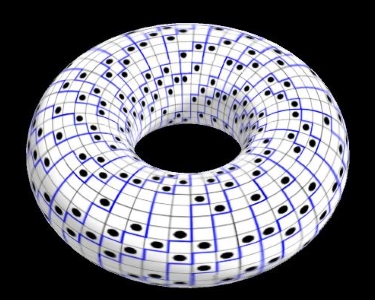
Theo Murphy international scientific meeting organised by Dr Christian Korff and Professor Vassily Gorbounov.
There is a new direction in Schubert calculus, which links the Yang-Baxter equation, the central equation in quantum integrable systems, to problems in representation theory that have their origin in enumerative geometry. This will be a cross-disciplinary meeting that brings together researchers of different career stages and from different areas in mathematics for a mix of talks and focused discussion rounds.
The speaker abstracts and biographies can be found below. Recorded audio of the presentations will be available on this page after the meeting has taken place.
Enquiries: contact the Scientific Programmes team
Organisers
Schedule
Chair
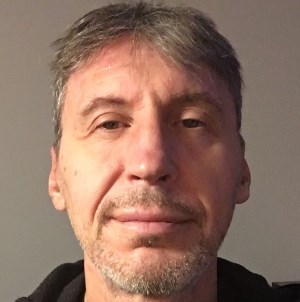
Professor Vassily Gorbounov, University of Aberdeen, UK

Professor Vassily Gorbounov, University of Aberdeen, UK
Professor Vassily Gorbounov graduated from Novosibirsk State University in 1982. He obtained his PhD in Mathematics from Novosibirsk State University in 1987. Professor Gorbounov was a researcher at the Mathematical Physics Laboratory, Higher School of Economics, Moscow, Russia. He now Professor of Mathematics at the University of Aberdeen, UK.
| 13:30 - 14:15 |
Enumerative symplectic duality
This will be a report on a joint work in progress with Mina Aganagic. Its goal is to prove the equality of curve counts in symplectically dual geometries, whenever both counts can be defined using present-day technology. 
Professor Andrei Okounkov, Columbia University, USA

Professor Andrei Okounkov, Columbia University, USAAndrei Okounkov studied at the Moscow State University, from which he received his bachelor degree and his doctorate in Mathematics (1995). He taught at University of Chicago, UC Berkeley, and Princeton University and is currently Samuel Eilenberg Professor of Mathematics at Columbia University. Andrei is a recipient of the Sloan Research Fellowship (2000), a Packard Fellowship (2001), the European Mathematical Society Prize (2004), the Fields Medal (2006), and the Compositio Prize (2010). His main research interest is modern mathematical physics. |
|
|---|---|---|
| 14:15 - 15:00 |
Lessons on integrability from little string theory
A class of integrable lattice models turns out to emerge from geometry of holomorphic symplectic varieties. The physics origin of this is a certain “little” string theory in six dimensions. The six dimensional string theory gives a unified framework for studying integrable lattice models by providing relations between different approaches: the ones due to Okounkov and Maulik, due to Nekrasov and Shatashvili, and that of Costello with Witten and Yamazaki. (This is based on joint works with Andrei Okounkov, and work to appear with Nikita Nekrasov and Samson Shatashvili). 
Professor Mina Aganagic, University of California, Berkeley, USA

Professor Mina Aganagic, University of California, Berkeley, USA |
|
| 15:00 - 15:30 | Tea | |
| 15:30 - 16:15 |
Super-spin-chains and gauge theories
Bethe/gauge correspondence relates quantum integrable systems to supersymmetric gauge theories. One of the mathematical consequences of this relation is the identification of the quantum cohomology ring of certain varieties with the Bethe subalgebras of quantum algebras. In this talk the two dimensional gauge theories corresponding to the Yangians of super-algebras of A type will be described. In a parallel development Nikita Nekrasov will present the four dimensional gauge theories with the surface defects supporting the (conjecturally) super-Kac-Moody chiral algebras. 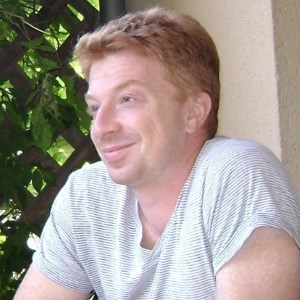
Professor Nikita Nekrasov, The Simons Center for Geometry and Physics, Stony Brook University, USA

Professor Nikita Nekrasov, The Simons Center for Geometry and Physics, Stony Brook University, USANikita Nekrasov is a Professor at the Simons Center since 2013 and was a Visiting Professor to the SCGP in 2009 -2013. He earned his Ph.D. at Princeton University in 1996 under the supervision of David Gross. His dissertation was on Four Dimensional Holomorphic Theories. Nekrasov was a postdoc in physics at Harvard University, a Junior Fellow at the Harvard Society of Fellows in 1996-1999, and the Dicke Fellow at Princeton University in 1999-2000, before becoming a permanent professor at the Institut des Hautes Etudes Scientifiques. He is mostly known for his work on supersymmetric gauge theory and string theory. Nekrasov partition function introduced in 2002 relates in an intricate way the instantons in gauge theory and string theory, integrable systems, and representation theory of infinite-dimensional algebras. It led to the proof of the Seiberg-Witten solution of Donaldson theory, which had been one of the major unsolved problems in the Quantum Field Theory since 1994. For his discovery of noncommutative instantons together with A.Schwarz in 1998, noncommutative monopoles and monopole strings with D.Gross in 2000 and for his work with A.Gorsky on the relations between gauge theories and many-body systems he was awarded the Jacques Herbrand Prize of French Academy of Sciences, in 2004. For his contributions to topological string theory and ADHM construction he received the Hermann Weyl Prize in 2004. Together with D.Maulik, A.Okounkov and R.Pandharipande he formulated a set of conjectures relating Gromov-Witten theory and Donaldson-Thomas theory (by now some of them are rigorously proven), for which the four authors were awarded the Compositio Prize in 2009. In addition to his research and advising postdocs and graduate students, Professor Nekrasov has organized several scientific workshops and programs for the Center, including “Integrability in Modern Theoretical and Mathematical Physics” in 2012, “Quiver Varieties” in 2013, “Gauge Theory, Integrability, and Novel Symmetries of Quantum Field Theory”, “Strongly Coupled Systems Away From Equilibrium” in 2014, “Resurgence and localization in string theory and quantum field theory”, “Future Prospects for Fundamental Particle Physics and Cosmology” in 2015. |
|
| 16:15 - 17:00 |
Mirror symmetry constructions for G/P
This talk will review some aspects of mirror symmetry for homogeneous spaces G/P and its interaction with the representation theory of G. For a cominuscule homogeneous space G/P there is an expression for the mirror LG model W in terms of coordinates which, by the geometric Satake correspondence in representation theory, are naturally identified with cohomology classes of G/P (joint works with Marsh, Pech, and Williams). A relationship between the critical points of W and its tropicalisation, and representation theory (work of Judd) will also be discussed. 
Professor Konstanze Rietsch, King's College London, UK

Professor Konstanze Rietsch, King's College London, UKKonstanze Rietsch works on interactions of Lie theory with mirror symmetry. She is a professor of mathematics at King's College London and, before joining King's, held postdocs at the Institute for Advanced Study, Cambridge and Oxford Universities. She studied at the University of Vienna and at MIT, where she was a student of George Lusztig. |
|
| 17:00 - 18:00 | Poster session |
Chair

Dr Laurent Manivel, CNRS, Paul Sabatier University, France

Dr Laurent Manivel, CNRS, Paul Sabatier University, France
Dr Laurent Manivel obtained his first degree from Ecole Normale Supérieure, Paris, in 1984, and then his PhD, Joseph Fourier University, Grenoble, in 1992. Between 1989 and 2014, he was a CNRS Researcher at the Fourier Institute, Grenoble. In 1999, he was awarded the Jacques Herbrand Prize of the French Academy of Sciences. Laurent worked at the Centre de Recherches Mathématiques, Montréal, in 2014. He worked at the Marseilles Mathematics Institute in 2015. Since 2017, Laurent has been at the Toulouse Mathematics Institute.
| 09:00 - 09:45 |
Hypergeometric and q-hypergeometric solutions of quantum differential equations
The hypergeometric and q-hypergeometric solutions of the equivariant quantum differential equations and associated qKZ difference equations for the cotangent bundle $T^*F_\lambda$ of a partial flag variety will be discussed. The leading term of the asymptotics of the q-hypergeometric solutions will be expressed in terms of the equivariant gamma class of $T^*F_\lambda$. That statement is analogous to the statement of the gamma conjecture for Fano varieties by Galkin, Golyshev, and Iritani. 
Professor Alexander Varchenko, University of North Carolina at Chapel Hill, USA

Professor Alexander Varchenko, University of North Carolina at Chapel Hill, USAAlexander Varchenko is a Soviet and Russian mathematician working in geometry, topology, combinatorics and mathematical physics. He graduated from Moscow State University in 1971, defended his PhD thesis under supervision of V.I. Arnold in 1974. From 1974 to 1984 he was a research scientist at the Moscow State University, in 1985–1990 a professor at the Gubkin Institute of Gas and Oil, and since 1991 he has been the Ernest Eliel Professor at the University of North Carolina at Chapel Hill, USA. |
|
|---|---|---|
| 09:45 - 10:30 |
Schubert puzzles and quantum integrability
Paul Zinn-Justin will discuss the geometric meaning of ‘puzzles’ in the context of Schubert calculus, and how the underlying quantum integrability allows to compute structure constants of the equivariant K-theory of d-step flag varieties and their cotangent bundles for d<=4 (joint work with A Knutson). If time permits, Paul will mention applications to the theory of symmetric polynomials. 
Professor Paul Zinn-Justin, University of Melbourne, Australia

Professor Paul Zinn-Justin, University of Melbourne, AustraliaPaul Zinn-Justin graduated from Ecole Normale Superieure (Paris), where he got hid PhD in theoretical physics in 1998. He then went on to become a CNRS researcher (junior, then senior scientist) in Paris until 2016, when he became a professor at the School of Mathematics and Statistics of the University of Melbourne, as well as ARC research fellow. |
|
| 10:30 - 11:00 | Coffee | |
| 11:00 - 11:45 |
Mirror symmetry for flag varieties via Langlands duality
Thomas Lam’s group proves Rietsch's mirror conjecture for minuscule flag varieties. The mirror theorem asserts that two systems of differential equations coincide: one arising from quantum cohomology, and the other from a Landau-Ginzburg model. The idea of the proof is to recognise the former as a Galois object and the latter as an automorphic object, and apply the (ramified) geometric Langlands correspondence. Some surprising connections to Kloosterman sums and sheaves will appear. If time permits, Thomas will speculate on the case of Fano varieties. This is joint work with Nicolas Templier. 
Professor Thomas Lam, University of Michigan, USA

Professor Thomas Lam, University of Michigan, USAThomas grew up in Sydney, Australia, and received a BSc degree from the University of New South Wales. He completed his PhD in 2005 with Richard Stanley at MIT in Cambridge, USA, and then went to Harvard University as a Benjamin Peirce Assistant Professor. Since 2009, Thomas has been at the University of Michigan, Ann Arbor, where he is currently Professor of Mathematics. Thomas has received a Sloan Fellowship, a Simons Fellowship, and a von Neumann Fellowship. In his spare time, Thomas enjoys computer games and rock-climbing. Since the birth of his daughter Eloise in 2016, he has had little spare time. |
|
| 11:45 - 12:30 |
Quantum Hitchin system for the Minahan-Nemeschansky E6 theory
According to Nekrasov and Shatashvili the Coulomb vacua of a large class of four-dimensional N=2 theories, subjected to the Omega background in two of the four dimensions, correspond to the eigenstates of a quantisation of a Hitchin integrable system. The vacua may be found as the intersection between two Lagrangian branes in the Hitchin moduli space, one of which is the space of opers (or quantum Hamiltonians) and one is defined in terms of a system of Darboux coordinates on the corresponding moduli space of flat connections. In this talk Lotte Hollands will introduce such a system of Darboux coordinates on the moduli space of SL(3) flat connections on the three-punctured sphere through a procedure called abelianization. She will describe the spectral problem characterising the corresponding quantum Hitchin system, and show how this leads to a characterisation of the Coulomb vacua of the Minahan-Nemeschansky E6 theory in the Omega-background. This talk is based on work in progress with Andrew Neitzke. 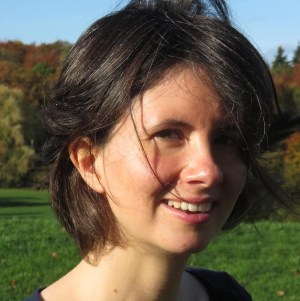
Dr Lotte Hollands, Heriot-Watt, UK

Dr Lotte Hollands, Heriot-Watt, UKAfter obtaining her PhD degree in 2009 with Professor Robbert Dijkgraaf at the University of Amsterdam, Dr Lotte Hollands obtained a NWO Rubicon fellowship to work with Professor Sergei Gukov at the California Institute of Technology. Her son Tristan was born in Oxford in 2011. In 2013 Lotte obtained a Royal Society Dorothy Hodgkin fellowship at the University of Oxford. Her daughter Nora was born in Oxford in 2014. In 2016 Lotte moved to Edinburgh, where she took the position of Assistant Professor at Heriot-Watt University. Lotte’s research is on the interface of quantum physics and mathematics. On the physics side it involves questions from gauge theory and string theory. On the mathematics side there are often deep relations to geometry, topology and algebra. At the moment Lotte is working on the construction of supersymmetric partition functions for N=2 quantum field theories and their relation to various structures on the moduli space of flat connections on a Riemann surface, such as spectral networks and opers. |
Chair

Professor Eric Vasserot, Institute of Mathematics of Jussieu - Paris Left Bank, France

Professor Eric Vasserot, Institute of Mathematics of Jussieu - Paris Left Bank, France
Professor Eric Vasserot was a student at the Ecole Normale Superieure in Paris, then successively a researcher at the CNRS at the Ecole Normale Superieure in Paris. Between 1995 and 2005, he was a Professor at the University of Cergy-Pontoise. Since 2005, he has been a Professor at the University Paris-Diderot. Eric works on geometric representation theory and categorifications. Eric was an invited speaker at the ICM in Seoul in 2014.
| 13:30 - 14:15 |
Motivic Chern classes, Hecke algebras, and stable envelopes
The Chern-Schwartz-MacPherson (CSM) class of a compact (complex) variety X is a homology class which provides an analogue of the total Chern class of the tangent bundle of X, for X singular. Its K-theoretic version, the motivic Chern class, is a class with good functorial properties, and for smooth X it normalizes to the Hirzebruch's lambda-y class of the cotangent bundle of X. One can associate these classes to any constructible subset of X, and in the talk I will discuss how one can use the Demazure-Lusztig operators in the Hecke algebra to calculate the motivic Chern classes for Schubert cells in generalized flag manifolds X=G/B. I will also discuss relations to K theoretic envelopes of Maulik and Okounkov, and a conjectural positivity property. This recovers and extends beyond Lie type A recent results obtained by Fejer, Rimanyi and Weber, using localization techniques. The talk is based on ongoing joint work with Paolo Aluffi, Changjian Su, and Jorg Schurmann. 
Professor Leonardo Mihalcea, Virginia Tech University, USA

Professor Leonardo Mihalcea, Virginia Tech University, USADr Leonardo Mihalcea obtained his bachelor degree from Babes-Bolyai University in Cluj-Napoca, Romania, and his PhD from University of Michigan, USA, in 2005, under the direction of Professor William Fulton. After graduation he held positions at Florida State University, Duke University and Baylor University. He joined the Mathematics Department at Virginia Tech in 2011, and since 2015 he is an Associate Professor. His interests lie in Schubert Calculus and related problems. Recent contributions focus on the quantum K theory ring of cominuscule Grassmann manifolds (finiteness, formulas for Schubert multiplication) and on the study of the characteristic classes of Schubert cells (the Chern-Schwartz-MacPherson classes) for generalized flag manifolds, in relation to certain lagrangian cycles on the cotangent bundle, and to stable envelopes. |
|
|---|---|---|
| 14:15 - 15:00 |
Ext operators as W-algebra intertwiners: AGT with matter for general surfaces
Andrei Negut will summarise an algebro-geometric proof, which works for a fairly general smooth projective surface, of the following fact: the Ext operator that Carlsson-Okounkov associate to moduli spaces of sheaves on a surface is a W-algebra intertwiner (as predicted by the work of Nekrasov and Alday-Gaiotto-Tachikawa). 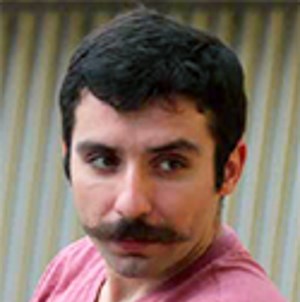
Professor Andrei Negut, Massachusetts Institute of Technology, USA

Professor Andrei Negut, Massachusetts Institute of Technology, USAAndrei Negut’s overall program concentrates on problems in geometric representation theory, an area that overlaps studies in algebraic geometry and representation theory. His results connect to areas in mathematical physics, symplectic geometry, combinatorics and probability theory. His current research focuses on moduli of sheaves, quiver varieties, quantum algebras and knot invariants. |
|
| 15:00 - 15:30 | Tea | |
| 15:30 - 16:15 |
On quantum cohomology and derived category of isotropic Grassmannians
Dubrovin’s conjecture (ICM 1998) predicts an intriguing relation between the quantum cohomology ring of a smooth projective variety X and its derived category of coherent sheaves. Namely, the generic semisimplicity of quantum cohomology of X should be equivalent to the existence of a full exceptional collection in the derived category of coherent sheaves on X. This poster will present results on the semisimplicity of the big quantum cohomology of symplectic isotropic Grassmannians IG(2,2n), its relation to unfoldings of singularities of type A_n, and Lefschetz exceptional collections in their derived categories. Based on a joint work with JA Cruz Morales, A Kuznetsov, A Mellit, and N Perrin. 
Dr Maxim Smirnov, University of Augsburg, Germany

Dr Maxim Smirnov, University of Augsburg, GermanyMaxim Smirnov received his MSc in Physics from the St Petersburg State University, Russia, and his PhD from the University of Bonn, Germany (2013). From 2013 to 2015 he has been a postdoc at several institutions in Europe such as IHES, ICTP and University of Hannover. Since 2015 he has been a junior professor at the University of Augsburg. His research interests are algebraic geometry and mathematical physics. In particular, Gromov-Witten theory, quantum cohomology, derived categories and mirror symmetry. |
|
| 16:15 - 17:00 |
Helix structures in quantum cohomology of Grassmannians
In occasion of the 1998 ICM in Berlin, B Dubrovin conjectured an intriguing connection between the enumerative geometry of a Fano manifold X with algebro-geometric properties of exceptional collections in the derived category D^b(X). Under the assumption of semisimplicity of the quantum cohomology of X, the conjecture prescribes an explicit form for local invariants of QH*(X), the so-called “monodromy data”, in terms of Gram matrices and characteristic classes of objects of exceptional collections. In this talk, a refinement of this conjecture will be presented, and particular attention will be given to the case of complex Grassmannians. At points of small quantum cohomology, these varieties manifest a coalescence phenomenon, whose occurrence and frequency is surprisingly subordinate to the distribution of prime numbers. A priori, the analytical description of these Frobenius structures cannot be obtained from an immediate application of the theory of isomonodromy deformations. Giordano Cotti will show how, under minimal conditions, the classical theory of M Jimbo, T Miwa, K Ueno (1981) can be extended to describe isomonodromy deformations at a coalescing irregular singularity. Furthermore, a property of quasi-periodicity of Stokes matrices associated to the points of small Quantum Cohomology of complex Grassmannians will be discussed. Based on joint works with B Dubrovin and D Guzzetti. 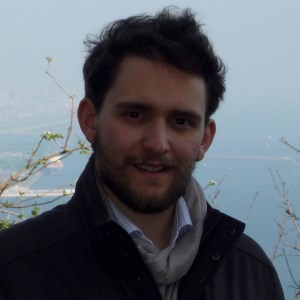
Dr Giordano Cotti, Max-Planck-Institut für Mathematik, Germany

Dr Giordano Cotti, Max-Planck-Institut für Mathematik, GermanyGiordano Cotti earned his PhD in September 2017 at the Scuola Internazionale Superiore di Studi Avanzati (SISSA) in Trieste, Italy, where he studied under the supervision of Professors Boris A Dubrovin and Davide Guzzetti. He is currently a postdoctoral fellow at the Max-Planck-Institut für Mathematik in Bonn, Germany, under the supervision of Professor Yuri I Manin. His research interests lie primarily in the interplay of analytic and algebraic geometry and differential equations arising from mathematical physics. More concretely, his work fits into the general research areas of Gromov-Witten and Frobenius manifolds theories, mirror symmetry, and the theory of integrable systems, namely the theories of isomonodromic deformations and asymptotic aspects of complex differential equations, as well their (conjectural) relationships with the derived geometry of smooth projective varieties (eg derived categories of coherent sheaves and their exceptional collections) and related mirror phenomena. |
Chair

Professor Andrei Okounkov, Columbia University, USA

Professor Andrei Okounkov, Columbia University, USA
Andrei Okounkov studied at the Moscow State University, from which he received his bachelor degree and his doctorate in Mathematics (1995). He taught at University of Chicago, UC Berkeley, and Princeton University and is currently Samuel Eilenberg Professor of Mathematics at Columbia University. Andrei is a recipient of the Sloan Research Fellowship (2000), a Packard Fellowship (2001), the European Mathematical Society Prize (2004), the Fields Medal (2006), and the Compositio Prize (2010). His main research interest is modern mathematical physics.
| 09:00 - 09:45 |
Cherednik operators at infinity
Heckman introduced N operators on the space of polynomials in N variables, such that these operators form a covariant set relative to permutations of the operators and variables, and such that Jack symmetric polynomials are eigenfunctions of the power sums of these operators. Maxim Nazarov introduces the analogues of these N operators for Macdonald symmetric polynomials, by using Cherednik operators. The latter operators pairwise commute, and Macdonald polynomials are eigenfunctions of their power sums. The groups compute the limits of their operators when N tends to infinity. These limits yield a Lax operator for Macdonald symmetric functions. This is a joint work with Evgeny Sklyanin. 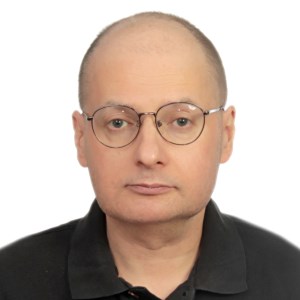
Professor Maxim Nazarov, University of York, UK

Professor Maxim Nazarov, University of York, UKMaxim Nazarov started his research in Moscow at the seminar of Israel Gelfand. In 1991 he obtained PhD in Mathematics from Moscow State University, supervised by Alexandre Kirillov and Grigori Olshanski. In 1990 he became Assistant Professor at the Moscow State University. In 1992–1993 he spent 12 months in Kyoto at the Research Institute for Mathematical Sciences as JSPS Postdoctoral Fellow. In 1993 he obtained a University of Wales Research Fellowship to work in Swansea for 2 years. In 1995 he was awarded an EPSRC Advanced Research Fellowship. In 1996 he moved to the University of York, where in 2000 he became a Lecturer. He gave an Invited Talk at the International Congress of Mathematicians in 2002. In 2003 he was awarded a Whitehead Prize by the London Mathematical Society. In 2003 he became a Reader in Mathematics at the University of York. In 2006 he became a Professor. |
|
|---|---|---|
| 09:45 - 10:30 |
Elliptic stable envelopes and finite-dimensional representation of elliptic quantum group of type $gl_N$
This work presents a construction of elliptic stable envelopes for partial flag variety as elliptic weight functions of type $gl_N$ using representation theory of the elliptic quantum group $U_{q,p}(¥widehat{sl}_N)$. The work also presents a finite-dimensional representation of $U_{q,p}(¥widehat{sl}_N)$ on the Gelfand-Tsetlin basis. The result is described in a combinatorial way in terms of the partitions of $[1,n]$, and gives an elliptic and dynamical analogue of the geometric representation of the quantum affine algebra $U_q(¥widehat{sl}_N)$ on equivariant K-theory constructed by Ginzburg-Vasserot and Nakajima. The elliptic stable envelopes allows us to obtain a geometric interpretation of our result as a representation of $U_{q,p}(\widehat{sl}_N)$ on equivariant elliptic cohomology. 
Professor Hitoshi Konno, Tokyo University of Marine Science and Technology, Japan

Professor Hitoshi Konno, Tokyo University of Marine Science and Technology, JapanHitoshi Konno is a Professor of Mathematics at Tokyo University of Marine Science and Technology. He obtained his Dr Sci in theoretical physics (string theory!) from University of Tsukuba, Japan, in 1989. He was then a postdoc at University of Alabama, USA, RIMS and Yukawa institute for theoretical physics in Kyoto. Before coming to Tokyo in 2013, he had worked at Hiroshima University. In 2002, he was a JSPS-Royal Society exchange fellow and visited Heriot-Watt University and Cambridge University. Hitoshi’s research interests lie in representation theory of quantum groups and quantum integrable systems. |
|
| 10:30 - 11:00 | Coffee | |
| 11:00 - 11:45 |
Quantum cohomology of some varieties with an action of an algebraic group
In this talk Clelia Pech will describe a family of algebraic varieties with actions of Lie groups which are closely related to homogeneous spaces. After describing the geometry and the orbit structure of these varieties, Clelia will explain how to understand rational curves on these varieties, as well their quantum cohomology ring. This is joint work with R Gonzales, N Perrin, and A Samokhin, see arXiv:1803.05063. 
Dr Clelia Pech, University of Kent, UK

Dr Clelia Pech, University of Kent, UKClelia obtained her PhD from the University of Grenoble in 2012. She was then a postdoctoral researcher at King's College London and the University of Lyon. Since 2015 she is a Lecturer in Mathematics at the University of Kent. |
|
| 11:45 - 12:30 | Panel discussion and overview |

